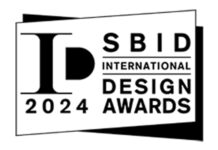There are a lot of great rivalries in the world: State of Origin, Yankees vs Mets, The Ashes, Real Madrid vs Barcelona. And not just on the sporting field. The humble kitchen is a surprisingly tense hotbed of competition between America, Australia and Europe. Why? Everyone has their own idea about what makes a kitchen great. In America, simplicity and power are key. In Europe, design, reliability and prestige are the ultimate goal. Australia doesn’t have a strong philosophy of its own, but instead ends up with a mix of both worlds.
Europe
 If Europeans are known for one thing, it’s style. Class is what it’s all about and, when it comes to aesthetics, few can match the burnished aluminium exterior of European craftsmanship. Take cars for example. Nothing has really matched European craftsmanship in the car world since World War Two, and the same philosophy is applied to appliances.
If Europeans are known for one thing, it’s style. Class is what it’s all about and, when it comes to aesthetics, few can match the burnished aluminium exterior of European craftsmanship. Take cars for example. Nothing has really matched European craftsmanship in the car world since World War Two, and the same philosophy is applied to appliances.
Take a look at any marquee European brand. They may be called ‘white goods’, but in Europe you’re not going to find a lot of manufacturers using that classic, white porcelain exterior. Instead, brushed aluminium is the material of the day. The use of aluminium is all about making an aesthetic statement. Found on high-end smartphones, as trim in expensive cars and as the casings of the most expensive laptops, brushed aluminium says something all on its own. It doesn’t improve a device’s performance, but there’s something to be said about prioritising looks. Aesthetics are the priority – nearly always over economy.
And that’s an important distinction. In the early days of electrical appliances, product quality was king. It wasn’t a rare thing for a person to hang on to a kettle or fridge for decade after decade. In today’s disposable society, that is far less likely to occur. In fact, many appliances come with a built in use by date, ensuring they don’t last unduly long.
But if there’s one place where the old school mentality still holds firm, it’s Europe. Exclusive brands at the top of the range aren’t concerned with the bulk numbers of lesser brands; it’s their reputation which is most important. Making things that don’t have exceptional reliability will hurt that reputation, no matter how much chrome or aluminium they pile on.
America
 The United States is the nation of innovation and there’s no denying the US has produced some incredible people and things over the years. You don’t become the most influential country on earth completely by fluke.
The United States is the nation of innovation and there’s no denying the US has produced some incredible people and things over the years. You don’t become the most influential country on earth completely by fluke.
Simplicity and efficiency are the keys to the American dream (there’s a reason that it’s the last holdout of the big, dumb, yet oh-so-simple and organic 8 cylinder engine). These American notions are rooted in the American Dream of the mid-20th century: a McMansion might be tacky, but it’s cheap and comfortable. The appliances you’ll find in that McMansion are designed with the same philosophy: to be clear, simple and do what they’re designed to do.
For example, in Europe you won’t find very many of the sort of appliances a lot of Americans purchase, like popcorn makers and bread makers and sandwich makers and donut makers and makers for every other extraneous nourishment you can imagine. Each one takes up a little more space than the last, each is a little less useful than the one that came before and each one gets used more rarely than its predecessor.
But it’s not all bad. A US kitchen is inherently a functional thing so, in America, devices are almost always labelled clearly and obviously with words or numbers, whereas in Europe a far more complicated system of symbols is nearly always used. This makes sense in a way, because European manufacturers have to cater for a wide array of different languages on the continent, and symbols are easier to make universal. However, with the trillion or two functionalities that modern devices have, this system can get super confusing!
Australia
 And that brings us to the land down under. While there isn’t a lot of appliance manufacturing here, there are still some local brands that design and export appliances.
And that brings us to the land down under. While there isn’t a lot of appliance manufacturing here, there are still some local brands that design and export appliances.
Australia is something of a hybrid, dragging together a whole bunch of influences from many parts of the world. There’s no denying the influence of American culture on our own, from TV to fashion to politics but, then again, we share a lot with our Euro cousins as well. Not to mention the range of different cultures at work here.
One finicky little thing Australian appliances seem to have appropriated from the Europeans is their system of symbols. This is particularly evident in the higher-end appliances that, you guessed it, come from Europe. Many of these brands modify their labelling for export to US markets, but Australia generally gets the standard model. This means we cop those confusing symbols that necessitate a trip to the manual every time we go to fire up the oven.
On the other hand, we also get a lot of the cheap and cheerfulness that is so prevalent in the States. Hard, brittle plastics and questionable build quality can sometimes mean regular replacement of often used items.
However, the doom and gloom isn’t pervasive. The fact is, with our own brands and a lot of foreign imports, there’s a huge amount of choice in the Australian market. Best of all, there is no standard ‘normal’. We have the flexibility and the freedom to choose our style perhaps a bit more than the more populous continents.
It’s really quite surprising just how different the humble kitchen can be from place to place, and region to region. And the differences aren’t just aesthetic either.
So, what’s the answer? Whose kitchen is best? Unfortunately, there isn’t one. That’s partly because of the fact that no matter where you are and what the prominent trends are, you should still be able to basically design whatever sort of kitchen your heart desires. The difference is in those trends, and how common it will be to see one over another. More importantly however, there is no right answer because there is no right style. If you value simplicity and the option to have literally every appliance you can think of, then a kitchen full of American stuff is probably the way to go. On the other hand, if chic design, prestige and above all, quality, are on your horizon then a Euro flavour is definitely up your alley as long as you don’t mind rooting through the manual to decipher the odd hieroglyphic.
Article and images courtesy Brisbane Appliance Sales.


































